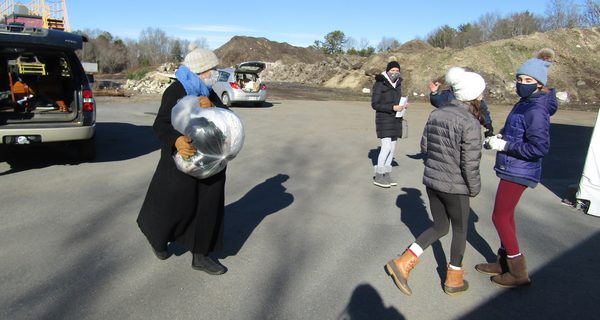By Amelia Tarallo
Hometown Weekly Staff
Of all the waste categories, textiles tend to be a growing and significant contributor to landfills each year. In 2018, the Environmental Protection Agency estimated that 17 million tons of textiles were generated in the US. Of that tonnage, only 2.5 million tons were recycled, while 11.3 million tons ended up in landfills. Looking at the numbers, it’s clear that most Americans have more than a few stray socks floating around their houses.
On Saturday, January 9, residents of Medfield flocked to the transfer station to drop off some of their own textile waste.
This was one of the multiple textile drives planned to help alleviate some of the waste being brought to the Medfield Transfer Station each day. “We have 12 bins [at the transfer station] that collect clothing, and they’re constantly full. People have been asking and asking and asking. We did a couple of collections in October and a couple in November. This our fifth time doing this,” explained Nancy Irwin.
Residents brought textiles in filled garbage bags, worn-out reusable bags, and in one case, cloth still on a fabric roll. The drive accepted any type of textile, including clothing, shoes, belts, pocketbooks, towels, sheets, stuffed animals, and quilts. Teenage volunteers took the items and loaded them into the provided trailer, in some cases condensing the items into bags or breaking them down to save room. In past weeks, the trailer was completely full by the end of the day. Saturday’s drive was not expected to be an exception.
For each of these drives, a textile repurposing and recycling company provides a trailer to hold the donated textiles. At the end of the day, the company picks up the trailer and transports the textiles. “At least 50 percent of the clothing goes to underprivileged, [developing] countries. What is not valuable - for that, they cut up into rags and they sell them. The idea is to keep it out of the waste stream and to do some good,” explained Irwin.
Instead of entering the waste stream, where they would be burned or take up to 200 years to completely decompose, these textiles are now going to people who can use them.





